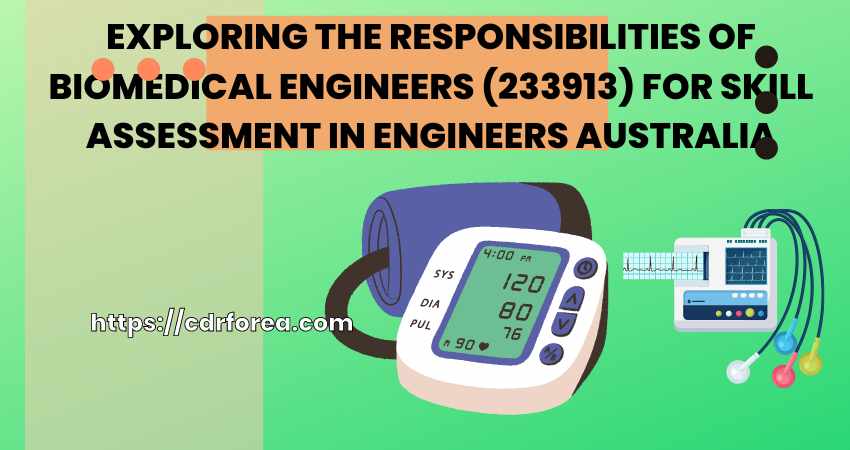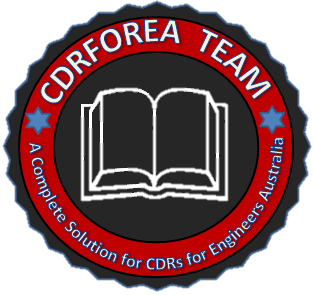
In Australia, biomedical engineering is a multidisciplinary field that solves biological and medical problems by utilizing physics, engineering, arithmetic, computers, physical chemistry, and materials science. For instance, Biomedical Engineering Skill Assessment in Australia develop novel medical instruments and technology, investigate the functions and mechanisms of live organisms, and collaborate with other medical specialists to treat patients using the methodology of physics. They also play a crucial role in the prevention of human disease through the design and development of medical devices and systems.
Biomedical Engineering Skill Assessment
Aeronautical engineers, along with other engineering professionals such as environmental engineers and marine designers, are also included in this field and may work alongside biomedical engineers to develop sustainable and eco-friendly medical solutions. Registration or licensing may be required for this career, and individuals interested in pursuing this career in Australia should consult the Australian government’s website for more information on the indicative skill level and the requirement of a positive skills assessment from The Institute of Engineers Australia and the Department of Home Affairs. Additionally, for overseas applicants, there may be specific sponsorship options available for those who have a formal job offer in Tasmania, an Australian state, and meet the genuine need for the nominated occupation, such as the Skilled Work Regional (Provisional) visa (subclass 491) or the Temporary Graduate visa (subclass 485) – Graduate Work.
The required academic qualification for this career is an Australian 4 year Bachelor degree in engineering at a University following 12 years of schooling or comparable education. The average salary for this occupation is $101,490 for male employees and $121,339 for female employees per year, according to the Australian Bureau of Statistics. For a complete list of eligible occupations, applicants can refer to the Skilled Occupation List published by the Australian government.
In Australia, a biomedical engineering bachelor’s degree is the minimum requirement. In Australia, formal qualifications are not always sufficient; in certain cases, you may also need relevant experience. A biomedical engineer in Australia could also need to register or obtain a license, depending on the position and the area.
Developing novel medical devices and equipment, such as monitors and therapeutic or diagnostic tools, is one of the primary responsibilities of a biomedical engineer. They collaborate with physicians, nurses, and other healthcare professionals to identify ways that technology might improve patient care. It is their responsibility to design these gadgets, ensure their functionality and safety, manage production, and distribute them.
Moreover, biomedical engineers use mechanics to research the musculoskeletal system and develop assistive technology that promotes healing. Braces, prosthetic limbs, and other devices that aid in the recovery of injured or disabled individuals can fall under this category. They provide guidance and develop instruments to measure physiological variables that impact patients undergoing surgery or receiving urgent treatment.
The medicinal applications of ultrasound and electromagnetic radiation must also be investigated and improved by the biomedical engineer. They examine the heart and brain using bio-electrical techniques, applying their knowledge of electrical engineering to develop new diagnostic tools and therapies for neurological illnesses.
An engineering project report
Biomedical engineers also develop novel materials and implantable artificial organs using their knowledge of materials science. These gadgets are long-lasting, safe, and efficient. In addition to researching the causes of diseases and developing novel medications and therapies to aid in the recovery of patients, they also examine the composition and operation of living organisms.
Lastly, biomedical engineers collaborate with patients and other medical professionals to deliver services. They may collaborate with physicians, nurses, and therapists to develop treatment plans; instruct patients and their caregivers in the use of medical equipment; and provide patients with ongoing support and education to enable them to manage their ailments. Biomedical engineers may also work closely with engineering technologists to design and develop medical equipment and devices.
Ultimately, biomedical engineers play a critical role in the development of novel medical devices and technology, the research of biological systems, and the provision of healthcare services. They apply their knowledge to help patients achieve better results, enhance their quality of life, and advance medicine.
FAQs on Biomedical Engineering Skill Assessment:
What is aeronautical engineering?
Aeronautical engineering involves the design, development, and maintenance of aircraft and spacecraft.
What is a biological engineering?
Biological engineering integrates engineering principles with biology to develop solutions for various biological processes and systems.
What is electrical engineering?
Electrical engineering focuses on the study and application of electricity, electronics, and electromagnetism.
What is agricultural engineering?
Agricultural engineering applies engineering principles to agricultural production and processing, including farm machinery and structures.
What is environmental engineering?
Environmental engineering addresses environmental issues by applying engineering principles to develop solutions for pollution control, waste management, and sustainable development.
What is civil engineering?
Civil engineering involves the design, construction, and maintenance of infrastructure such as roads, bridges, buildings, and water supply systems.
What is mechanical engineering?
Mechanical engineering deals with the design, analysis, and manufacturing of mechanical systems, including machinery and thermal systems.
What is chemical engineering?
Chemical engineering applies principles of chemistry, physics, and mathematics to develop processes for the production of chemicals, fuels, and materials.
What is structural engineering?
Structural engineering focuses on the design and analysis of structures to ensure their safety, stability, and durability.
What is marine engineering?
Marine engineering involves the design, construction, and maintenance of ships, offshore structures, and marine equipment.
What is electrical engineering?
Electrical engineering focuses on the study and application of electricity, electronics, and electromagnetism.
What is biomedical engineering?
Biomedical engineering applies engineering principles to healthcare and medical sciences, including the design of medical devices and equipment.
What is clinical engineering?
Clinical engineering involves the management and maintenance of medical equipment in healthcare settings.
What is a professional engineer?
A professional engineer is someone who is licensed or certified to practice engineering based on their education, experience, and competency.
What is ANZSCO skill level?
ANZSCO (Australian and New Zealand Standard Classification of Occupations) skill level is a classification system used to assess the skill level and specialization of occupations.
What is relevant skilled employment assessment?
Relevant skilled employment assessment evaluates work experience to determine its relevance to a specific occupation for migration purposes.
What is a competency demonstration report (CDR)?
A competency demonstration report is a document prepared by engineers applying for skilled migration to Australia, demonstrating their competencies in their occupation.
What is skilled migration?
Skilled migration refers to the process of immigrating to a country based on skills, qualifications, and work experience in demand in that country.
What is a migration skills assessment?
A migration skills assessment evaluates the qualifications and skills of individuals applying for skilled migration to Australia.
What is a summary statement?
A summary statement is a part of the competency demonstration report (CDR) that provides a summary of the applicant’s engineering skills and experiences.
What is general education?
General education refers to the foundational knowledge and skills acquired through primary and secondary education, typically not specific to a particular occupation.
What is a unit group?
A unit group is a classification of occupations with similar skill levels and job duties within the ANZSCO framework.
What are engineering professionals NEC?
Engineering professionals NEC (Not Elsewhere Classified) refers to engineering occupations that do not fall under specific categories but still require engineering expertise.
What is Australian PR?
Australian PR (Permanent Residency) grants individuals the right to live and work in Australia indefinitely.
What is the role of work experience in migration skills assessment?
Work experience is evaluated to assess an individual’s suitability for skilled migration based on their experience in a relevant occupation.
What are medical devices?
Medical devices are instruments, apparatuses, machines, or implants used in healthcare for diagnosis, prevention, monitoring, or treatment of medical conditions.
What are engineering principles?
Engineering principles are fundamental concepts and theories applied in engineering disciplines to solve problems and design solutions.
What are the requirements for skilled migration to South Australia?
Skilled migration to South Australia requires meeting specific eligibility criteria set by the state government, including occupation demand and skill assessment.
What are the requirements for skilled migration to Western Australia?
Skilled migration to Western Australia has specific eligibility criteria determined by the state government, including occupation demand and skill assessment.
What is the role of engineers in society?
Engineers play a crucial role in society by applying scientific and mathematical principles to design, create, and maintain infrastructure, technology, and systems essential for modern life.
